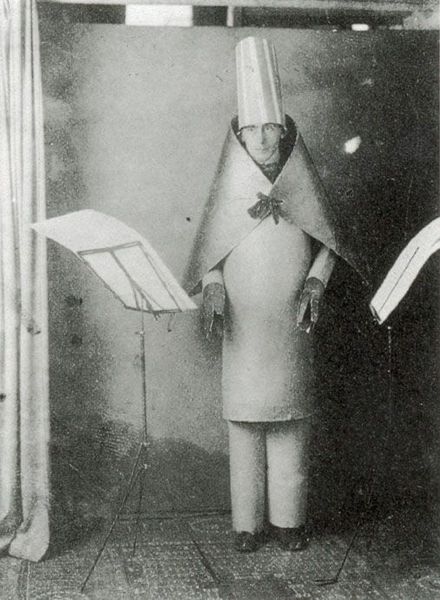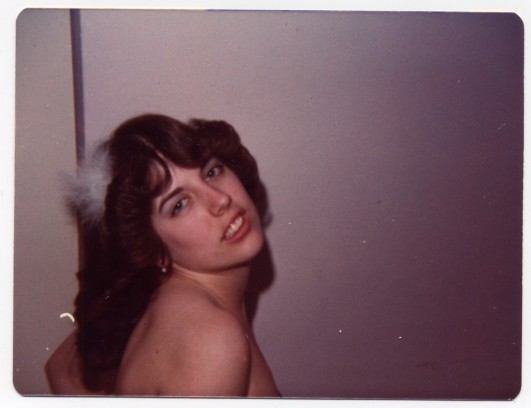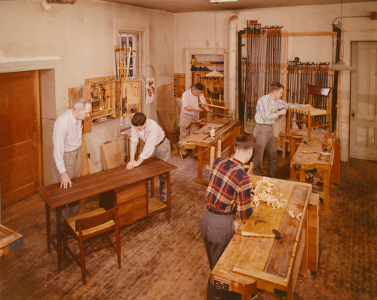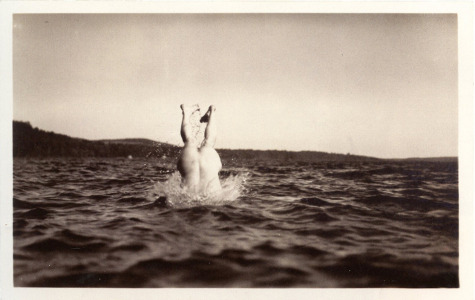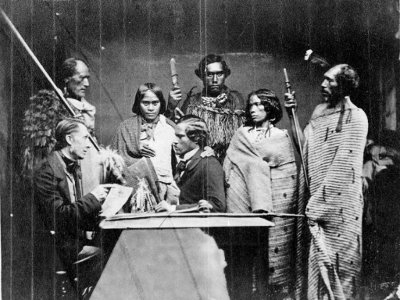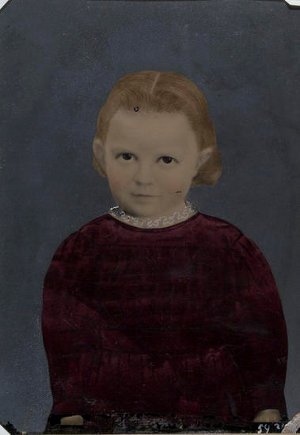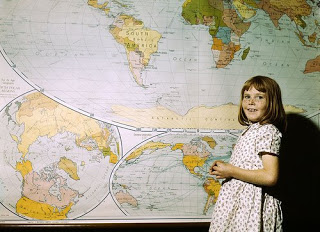No edit summary |
m (moved GMU:Dataflow I/Jeremy to GMU:Dataflow I WS12/Jeremy: Prepare for Dataflow I in SS 2013) |
||
| (16 intermediate revisions by one other user not shown) | |||
| Line 1: | Line 1: | ||
[[File: | [[File:440px-Hugo Ball Cabaret Voltaire.jpg]] | ||
Hugo Ball at the Cabaret Voltaire, Zurich, 1916 | |||
photographer unknown | |||
== | ==Moses== | ||
My patch is called Moses, it composes haiku poetry, or rather, recomposes the lines of poetry that are available to it in response to an image. | |||
The images used are all sourced from the internet and have no known photographer. In selecting these images I am interested in the idea of a deficient human element. Found images can sometimes feel personal to us and the narrative elements reveal themselves quickly. At the same time, an everyday or observed feeling reminds us that we can detach ourselves from them and their subjects quite readily. | |||
The text being used is sourced from Japanese haiku poetry, translated into English. The poets include Buson (1715-1783), Basho (1644-1694), and Buson (1715-1783) and other major poets to make use of the Haiku. | |||
Traditionally, the Haiku presents a contrast or a 'cutting' aspect, including the juxtaposiition of text and image. | |||
[[File:Moses.pd]] | |||
[[File:Haiku.SacredTexts.1.txt]] | |||
== documentation == | |||
[[File:1407 girl024 med.jpg]] | |||
Comical Dutch script | |||
Flip-flapping across the sky | |||
In this windy nest | |||
_______________________________ | |||
[[File:Student woodworking class.jpg]] | |||
On the death of his child | |||
And dry my dreaming but still ... | |||
Insatiable fleas | |||
_______________________________ | |||
[[File:Woman.jpg]] | |||
Women planting rice | |||
Drawn up from my frozen well ... | |||
Weird hollow echo | |||
_______________________________ | |||
[[File:Unknown diver.jpg]] | |||
Issa stepchild bird | |||
Dew evaporates and all our world is dew ... | |||
Black cloudbank broken | |||
_______________________________ | |||
[[File:Maori.jpg]] | |||
But their ancient song | |||
Flip-flapping across the sky | |||
Wild geese write a line | |||
_______________________________ | |||
[[File:Portraitofachild.jpg]] | |||
The songs of froglings | |||
Our old scarecrow topples down | |||
In silent midnight | |||
_______________________________ | |||
[[File:Girl 1943.jpg]] | |||
White they meet | |||
Scatters in the night ... now see | |||
Black cloudbank broken | |||
Latest revision as of 05:59, 14 October 2013
Hugo Ball at the Cabaret Voltaire, Zurich, 1916
photographer unknown
Moses
My patch is called Moses, it composes haiku poetry, or rather, recomposes the lines of poetry that are available to it in response to an image.
The images used are all sourced from the internet and have no known photographer. In selecting these images I am interested in the idea of a deficient human element. Found images can sometimes feel personal to us and the narrative elements reveal themselves quickly. At the same time, an everyday or observed feeling reminds us that we can detach ourselves from them and their subjects quite readily.
The text being used is sourced from Japanese haiku poetry, translated into English. The poets include Buson (1715-1783), Basho (1644-1694), and Buson (1715-1783) and other major poets to make use of the Haiku.
Traditionally, the Haiku presents a contrast or a 'cutting' aspect, including the juxtaposiition of text and image.
documentation
Comical Dutch script
Flip-flapping across the sky
In this windy nest
_______________________________
On the death of his child
And dry my dreaming but still ...
Insatiable fleas
_______________________________
Women planting rice
Drawn up from my frozen well ...
Weird hollow echo
_______________________________
Issa stepchild bird
Dew evaporates and all our world is dew ...
Black cloudbank broken
_______________________________
But their ancient song
Flip-flapping across the sky
Wild geese write a line
_______________________________
The songs of froglings
Our old scarecrow topples down
In silent midnight
_______________________________
White they meet
Scatters in the night ... now see
Black cloudbank broken
